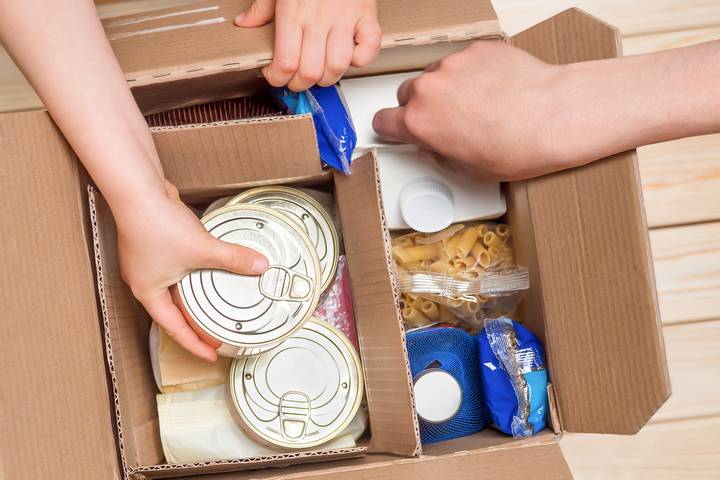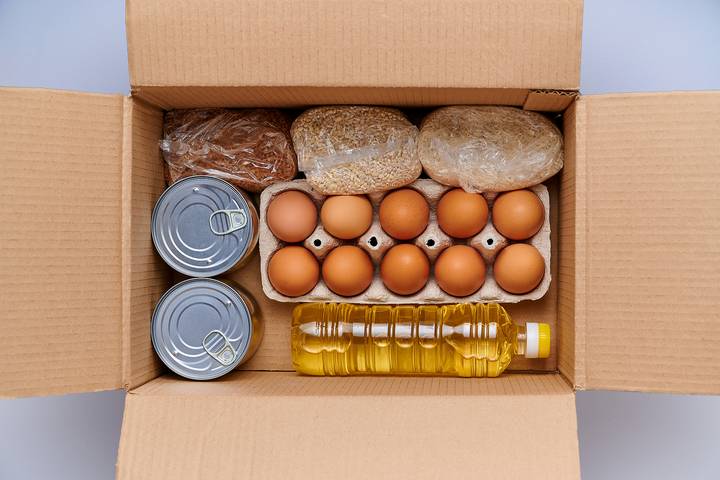A Guide to Corrugated Boxes for Food Packaging
If you have a business in the food industry, you will understand the importance of packaging. Your food packaging must be durable enough to protect the products through a lengthy delivery journey. It must also adhere to strict food safety and hygiene standards. Plus, you need to have an attractive packaging design to entice customers, making them confident about your brand.
Corrugated boxes are ideal choices to use for food packaging. These boxes are known for their sturdy structures, allowing businesses to transport food products reliably. In addition, the corrugated box stores the food in a clean and sealed container that minimizes the risk of spoilage. Best of all, this packaging is versatile and lets you customize various designs.
Using corrugated boxes for food packaging is an excellent idea. The innovative design complements many requirements you need in food packaging, including durability, safety, and customization. You can use these boxes to protect and transport your products easily. Corrugated boxes also have numerous benefits, such as portability, low costs, and environmental friendliness.
Let’s learn about using corrugated boxes in food packaging.
What is a corrugated box?

A corrugated box describes a protective container used to store items, including food products. Contrary to a popular misconception, corrugated boxes are not identical to cardboard boxes. A standard cardboard box is only made with one layer of material, while corrugated boxes can have multiple protective layers.
Here is a quick summary of how corrugated boxes work:
- A corrugated box has multiple sheets of material, including an inside layer, middle layer, and outer layer.
- The middle layer is fluted, which looks like a pattern of waves or small arches. These flutes reinforce the strength and rigidity of the corrugated boxes.
- The other layers are made with linerboard, a flat material placed on the top and bottom of the fluted sheet. Linerboard protects the flutes and adds extra stability to the corrugated boxes.
Different types of corrugated boxes are available with varying strength options and thicknesses. You can have single-wall, double-wall, or triple-wall corrugated boxes, depending on your usage. While the triple-wall format is resilient, the single-wall and double-wall corrugated boxes are sturdy enough for most food packaging needs.
Why is corrugated food packaging used?

Corrugated boxes are popular in the food packaging industry. Their usage is widespread, spanning from bakeries to grocery stores. Many businesses use corrugated boxes because of their unique characteristics, making them superior to other types of food packaging.
The advantages of corrugated food packaging boxes include:
- Durability: Corrugated boxes are highly resilient. They can withstand long, complex transportation and delivery schedules.
- Portability: A corrugated box is lightweight and easy to carry, whether you’re a packer, delivery driver, or customer.
- Safety: Corrugated boxes prevent moisture from infiltrating food products. They protect foods more effectively than alternatives.
- Versatility: Corrugated cardboard is highly adaptable. You can adjust the material into different shapes or sizes based on your needs.
- Customization: A corrugated box is easy to print on and cheap to brand. You can design colourful, cool, and cute food packaging boxes.
- Low Costs: Corrugated boxes are inexpensive and viable for businesses of any size. By ordering corrugated boxes in bulk, you save even more money.
Other forms of food packaging, like cartons or bags, may meet several of the above criteria. However, they aren’t as well-rounded as corrugated food packaging. Corrugated boxes appeal to businesses because they have many features that aren’t available in alternative packaging options.
Are corrugated boxes safe for food?

Yes, corrugated boxes are safe for food. These boxes are popular due to their ability to prevent foodborne pathogens. Making corrugated boxes involves extreme heat to bond the materials together. The temperatures may exceed 180°F, and most bacteria cannot survive this type of heat. When you place food in corrugated boxes, there’s barely any bacteria left in the corrugated fibres. As a result, these containers are clean, safe, and reliable for food storage.
In addition, corrugated boxes can inhibit bacterial growth. Scientific research has shown these boxes have a dramatic ability to maintain food freshness. Any bacteria will become trapped in the corrugated fibres, unable to access water or essential nutrients that extend their lifespan. As such, the harmful microorganisms will die before they reach the food.
Compared to other packaging materials, corrugated boxes can keep fruits and vegetables fresher for up to 3 days longer. You can also use corrugated boxes for packaging eggs, bread, and meats with similar effectiveness.
What are food grade boxes?

You may have heard of corrugated boxes described as food-grade packaging. Food-grade boxes refer to food packaging that meets health regulations and safety standards. These boxes can preserve a food product’s shelf life, maintaining freshness in taste and appearance. Also, food-grade packaging won’t degrade regardless of its environment, whether in a warm restaurant kitchen or cool supermarket freezer.
Food-grade packaging is crucial to minimizing deterioration and preventing contamination. The health standards ensure the food packaging contains unspoiled items safe for consumption. Manufacturers must carefully design corrugated food packaging to meet food-grade standards. Businesses should always verify their corrugated boxes for food packaging are transported, handled, distributed, and stored safely.
Here are some ideas to improve the safety of food packaging boxes:
- Plan your corrugated food packaging to guard against spills, breaks, and leaks.
- Test any adhesives applied to the food packaging. They must uphold the box’s structure during the transportation chain.
- Invest in high-quality corrugated boxes with multiple walls.
Mitchel Lincoln can help your business design safe, reliable, and unique corrugated boxes for food packaging. Our packaging specialists have years of experience and expertise, making us the industry experts. Contact Mitchel Lincoln for more information about our packaging specialties.
January 9, 2023
A Guide to Frozen Food Shipping Boxes
September 23, 2022
What Is a Gaylord Box?
September 7, 2022
What Is Retail Ready Packaging?
May 27, 2022
Can Corrugated Cardboard Boxes Keep Pizza Warm?
April 28, 2022
Why Custom Boxes with Logos Are Important for Branding
April 28, 2022
Can Cardboard Boxes Be Customized?
April 22, 2021
2020 Sales Representative of the Year
January 1, 2021
ML eShop
December 2, 2020
2019 Sales Representative of the Year
March 23, 2020








